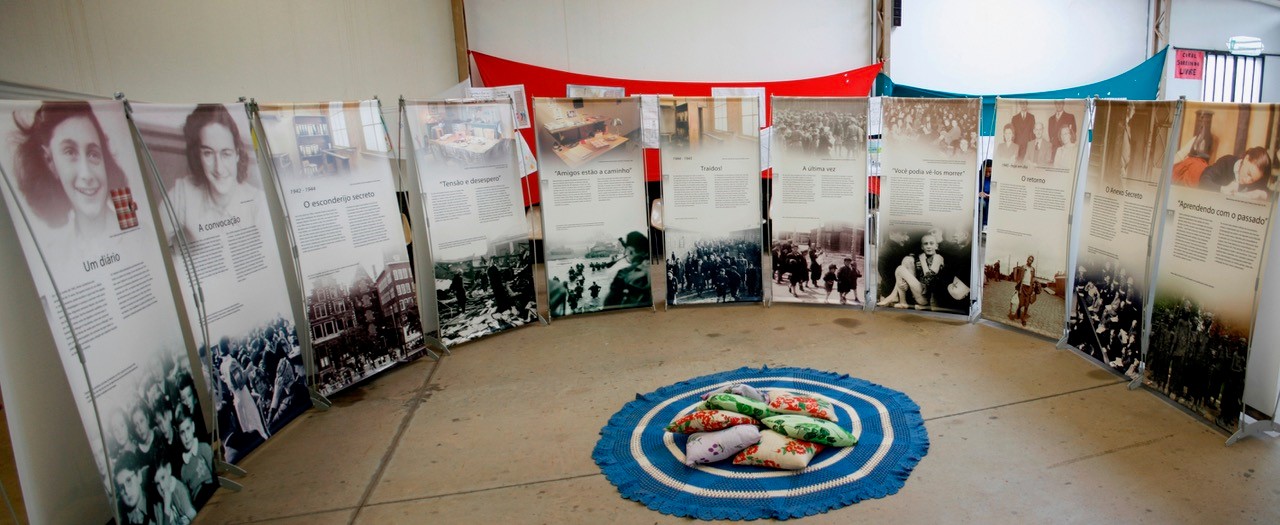Let Me Be Myself - The Life Story of Anne Frank
 The educational exhibition 'Let Me Be Myself' - The Life Story of Anne Frank tells the story of Anne Frank and the Holocaust and it challenges the visitors to
reflect on more general subjects like identity, prejudice and discrimination. The
exhibition was launched officially in 2015 and since then it is the centre piece of
the international outreach work of the Anne Frank House.
The educational exhibition 'Let Me Be Myself' - The Life Story of Anne Frank tells the story of Anne Frank and the Holocaust and it challenges the visitors to
reflect on more general subjects like identity, prejudice and discrimination. The
exhibition was launched officially in 2015 and since then it is the centre piece of
the international outreach work of the Anne Frank House.
The exhibition will have a limited run from March 22 through April 12, 2019 at the Museum of Texas Tech University.
Historical Content
The historical part of 'Let Me Be Myself' enables visitors to identify with the personal story of Anne Frank. Large-size pictures show Anne's happy early childhood in Frankfurt, followed by the immigration to Amsterdam. In a consequent manner the exhibition connects the personal story of the Frank family with the important historical events of that time: the rise of the national socialists, in Germany the isolation and discrimination of the Jewish population, eventually culminating into the Holocaust.
Several modules in the exhibition show images of the house in the centre of Amsterdam in which the Frank family hid for more than two years. These modules also contain images and texts about the outside world of that time: the Netherlands under Nazi occupation, the deportations and the concentration camps.
Anne Frank Today
The contemporary part of the exhibition contains stories of young people today. It
explores four general themes that are drawn from the story of Anne Frank:
• Identity: How do you perceive your own identity? Is it different from how others
perceive you?
• Individuals as group members: What groups do you belong to? How do others categorise
you?
• Discrimination: What happens if you are not accepted by others?
• Response: What can we do against discrimination?
Anne Frank
In many countries Anne Frank has become the symbol of the mass murder of Jews during the Second World War.
Anne Frank was born June 12, 1929 in Frankfurt, Germany. She was the daughter of Otto and Edith Frank and had a three-year old sister, Margot. Just like many other Jews, the Frank family fled Germany after Hitler and his National-Socialist party came to power in 1933. The Jews who stayed in Germany were excluded from society. The Frank family went to the Netherlands where father Otto started a company.
In May 1940, the Nazis occupied the Netherlands and soon anti-Jewish measures were introduced. In July 1942, large-scale deportations of Jews took place. The Frank family went into hiding along with four others. They hid in the annex of Otto Frank's office building on the Prinsengracht in Amsterdam, right in the heart of the city. During their time in hiding, Anne Frank kept a diary. In August 1944 the hiding place was betrayed and the eight people were taken to different concentration camps. Anne Frank eventually died in the camp Bergen-Belsen. Only Otto Frank survived the war. In 1946 the diary of Anne Frank was first published. It is now translated into 60 languages and has become one of the best known documents about the Holocaust.
The building where the Frank family hid is now a museum, the Anne Frank House
Museum of Texas Tech University
-
Address
3301 4th Street, Lubbock, TX 79415 -
Phone
806.742.2490 -
Email
museum.texastech@ttu.edu
